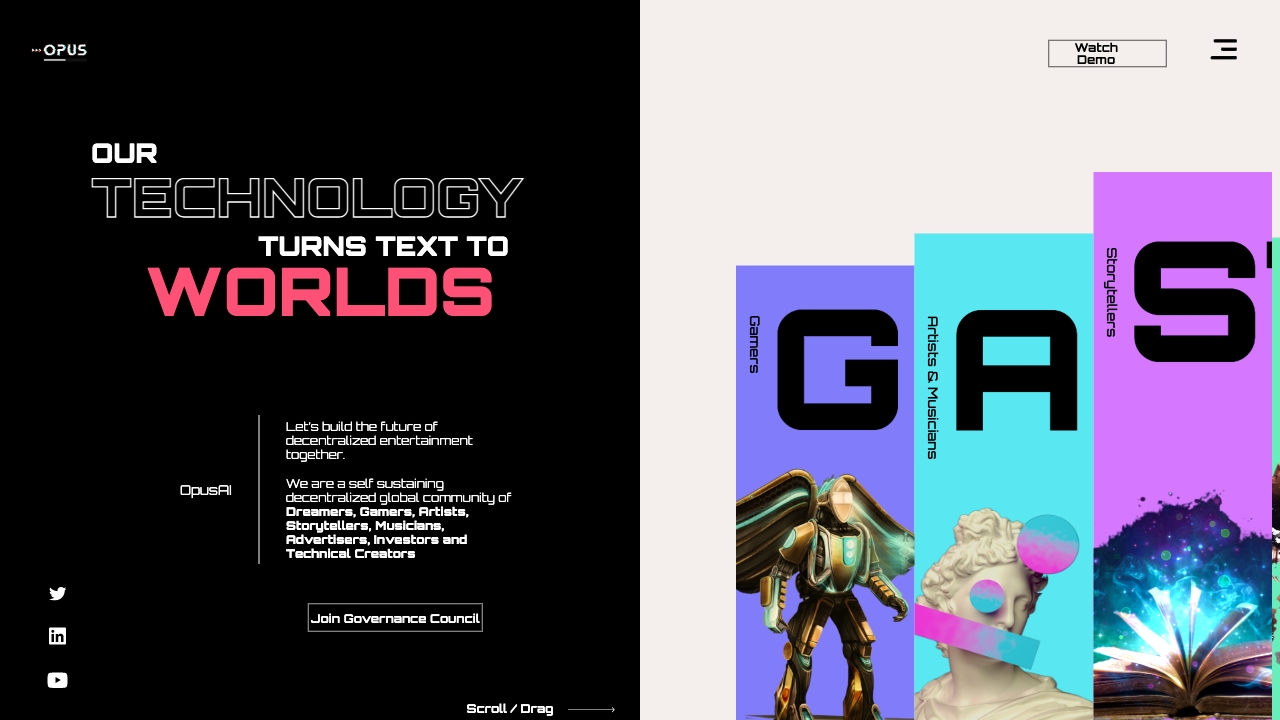Opus is a 3D creator platform that generates text-to-video, giving life to adventurous stories. It aims to turn text into movies and games, welcoming users to a new age of storytelling. Opus provides a platform for dreamers, gamers, artists, storytellers, musicians, advertisers, investors, and technical creators to build the future of decentralized entertainment together.
What is Opus?
How to use
Users can input text, and Opus's technology turns those words into images that animate, creating videos. The platform offers features for script writing, pre-production, casting, video editing, coloring, and music creation.
Core Features
- Text-to-video generation using AI
- Computational production of scenes, assets, characters, dialogue, and visual effects
- Story NLP trained to extract features from any literary style in English
- Lighting, camera control, terrain generation
- Humanoid character creation and animation
Use Cases
- Turning written stories into animated videos
- Creating game cinematics from text descriptions
- Generating marketing content from text-based scripts
- Developing educational videos from written lessons
FAQ
What is Opus?
Opus is a 3D creator platform that generates text-to-video, giving life to your adventurous stories.
Who is Opus for?
Opus is for dreamers, gamers, artists, storytellers, musicians, advertisers, investors, and technical creators.
How does Opus work?
Opus uses AI to turn text into images that animate, creating videos. It offers features for script writing, pre-production, casting, video editing, coloring, and music creation.
Pricing
Pros & Cons
Pros
- Turns text into animated videos quickly
- Reduces production costs compared to traditional filmmaking
- Democratizes content creation, making it accessible to more people
- Offers a wide range of features for video editing and customization
Cons
- May require a learning curve to master all features
- The quality of the generated video depends on the quality of the input text
- Potential limitations in creative control compared to traditional filmmaking
